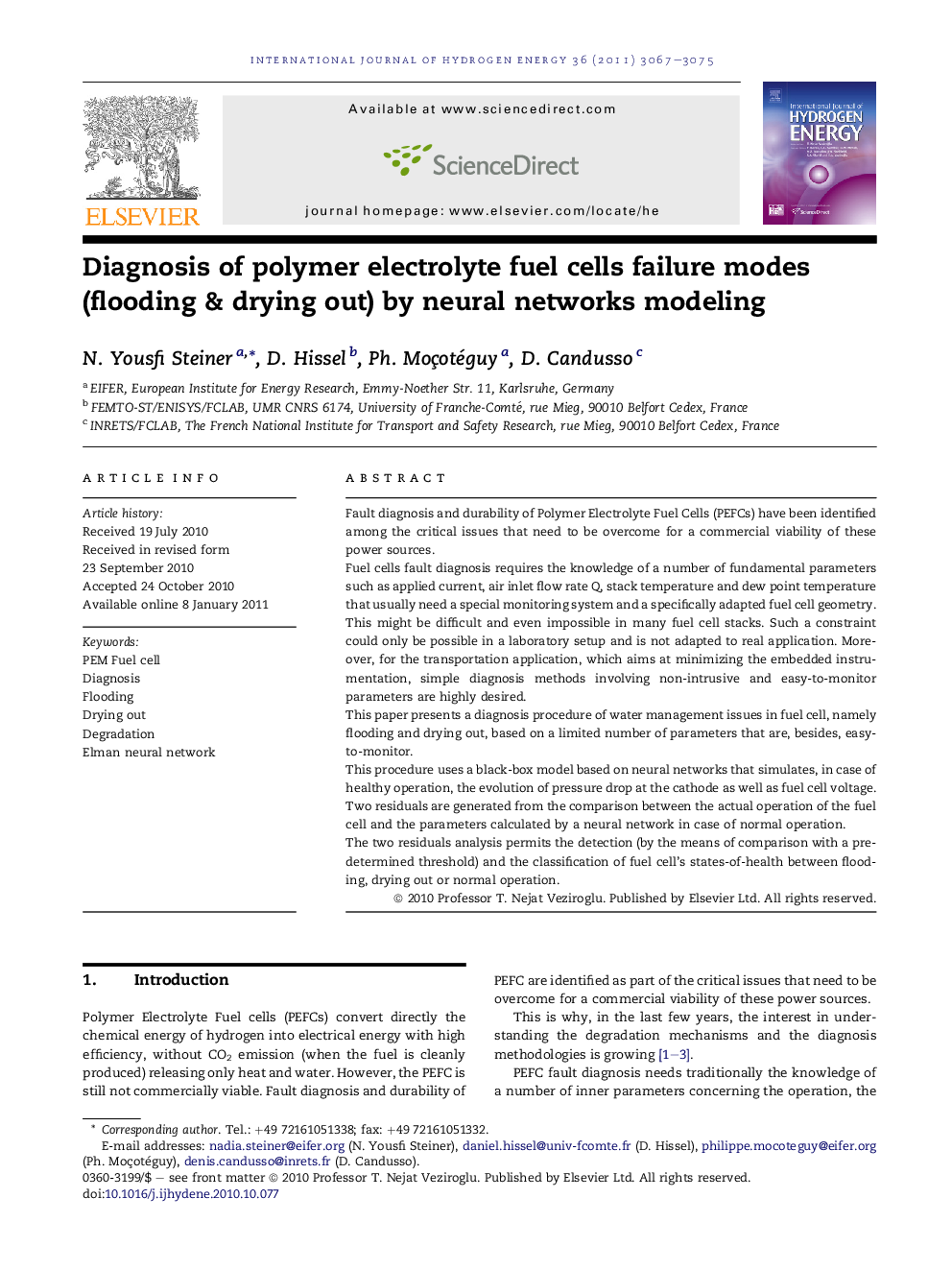| Article ID | Journal | Published Year | Pages | File Type |
|---|---|---|---|---|
| 1276420 | International Journal of Hydrogen Energy | 2011 | 9 Pages |
Fault diagnosis and durability of Polymer Electrolyte Fuel Cells (PEFCs) have been identified among the critical issues that need to be overcome for a commercial viability of these power sources.Fuel cells fault diagnosis requires the knowledge of a number of fundamental parameters such as applied current, air inlet flow rate Q, stack temperature and dew point temperature that usually need a special monitoring system and a specifically adapted fuel cell geometry. This might be difficult and even impossible in many fuel cell stacks. Such a constraint could only be possible in a laboratory setup and is not adapted to real application. Moreover, for the transportation application, which aims at minimizing the embedded instrumentation, simple diagnosis methods involving non-intrusive and easy-to-monitor parameters are highly desired.This paper presents a diagnosis procedure of water management issues in fuel cell, namely flooding and drying out, based on a limited number of parameters that are, besides, easy-to-monitor.This procedure uses a black-box model based on neural networks that simulates, in case of healthy operation, the evolution of pressure drop at the cathode as well as fuel cell voltage. Two residuals are generated from the comparison between the actual operation of the fuel cell and the parameters calculated by a neural network in case of normal operation.The two residuals analysis permits the detection (by the means of comparison with a pre-determined threshold) and the classification of fuel cell’s states-of-health between flooding, drying out or normal operation.
